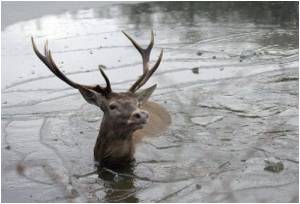
The invasive plant bush honeysuckle, for example.
Yes, that leafy shrub with the lovely egg-shaped leaves on arching branches, fragrant white or yellow flowers and the dark red berries so attractive to birds.
Called bush or Amur honeysuckle, Lonicera maackii derives from the borders of the Amur River, which divides the Russian Far East from Manchuria. Its Latin name honors Richard Maack, a 19th-century Russian naturalist.
"I've spent a lot of time in honeysuckle," Allan says, "and I can tell you there are deer tunnels through it. So if you get down low, you can actually move through honeysuckle pretty efficiently. And you pick up a lot of ticks while you're back in there."
An interdisciplinary team made up of ecologists, molecular biologists and physicians from Washington University in St. Louis and the University of Missouri-St. Louis tested Allan's suspicions by experiment in a conservation area near St. Louis.
Advertisement
As Allan and his colleagues report this week in the Proceedings of the National Academy of Sciences, the density of white-tailed deer in honeysuckle-invaded areas was roughly five times that in areas without honeysuckle and the density of nymph life-stage ticks infected with bacteria that cause human disease was roughly 10 times higher.
Advertisement
Source-Eurekalert







